

Economic Growth Funding | From 1944-2030

Humanitarian Growth & Economic Recovery Funding, a 75-year-old, institutionally backed financial mechanism, remains one of the most sought-after funding strategies for large-scale development. Unlike traditional financing, this structured capital infusion operates outside conventional debt instruments, meaning funds deployed do not require repayment. Designed to facilitate economic expansion, infrastructure growth, and high-impact projects, this regulated, private invitation-only program has consistently provided capital solutions at the highest institutional level while mitigating financial risk for qualified participants.
GFMT Global operates as a project compliance, analysis, and funding desk correspondent delegate. We work directly with intake managers and signatories at provisional monetary desks. We coordinate with approved law firms and other licensed professionals in regulated banking environments to structure and submit qualified project applications for humanitarian and economic hybrid-grant funding. There is no repayment required.
Historically, only sovereign entities and institutional firms could access these financial programs. Today, through carefully managed intake processes, GFMT Global helps qualified project sponsors, CEO's, institutional stakeholders, and high-net-worth clients gain privileged entry into these funding mechanisms—ensuring compliance, transparency, and financial integrity at every step.
The United Nations-SDG's | The Financial Driver | 2030
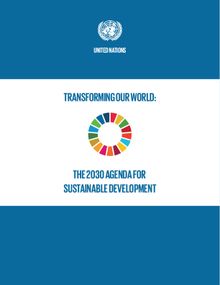 PDF
PDF
The 2030 Agenda for Sustainable Development, unanimously adopted by UN member states in 2015, serves as a globally endorsed strategic framework aimed at aligning economic advancement with social equity and environmental stewardship. Central to the Agenda are 17 Sustainable Development Goals (SDGs)—a set of interconnected objectives designed to mobilize both developed and developing nations around coordinated action. These goals emphasize that the eradication of poverty must be integrated with broader efforts to elevate healthcare, education, and economic opportunity, while simultaneously confronting the existential challenges of climate change, biodiversity loss, and environmental degradation. Far from being aspirational rhetoric, the SDGs function as a multi-sectoral operating system for 21st-century prosperity—anchoring policy, capital markets, and innovation pipelines in shared purpose and measurable outcomes.
Download "The United Nations Agenda for Sustainable Development Goals SDG.pdf"
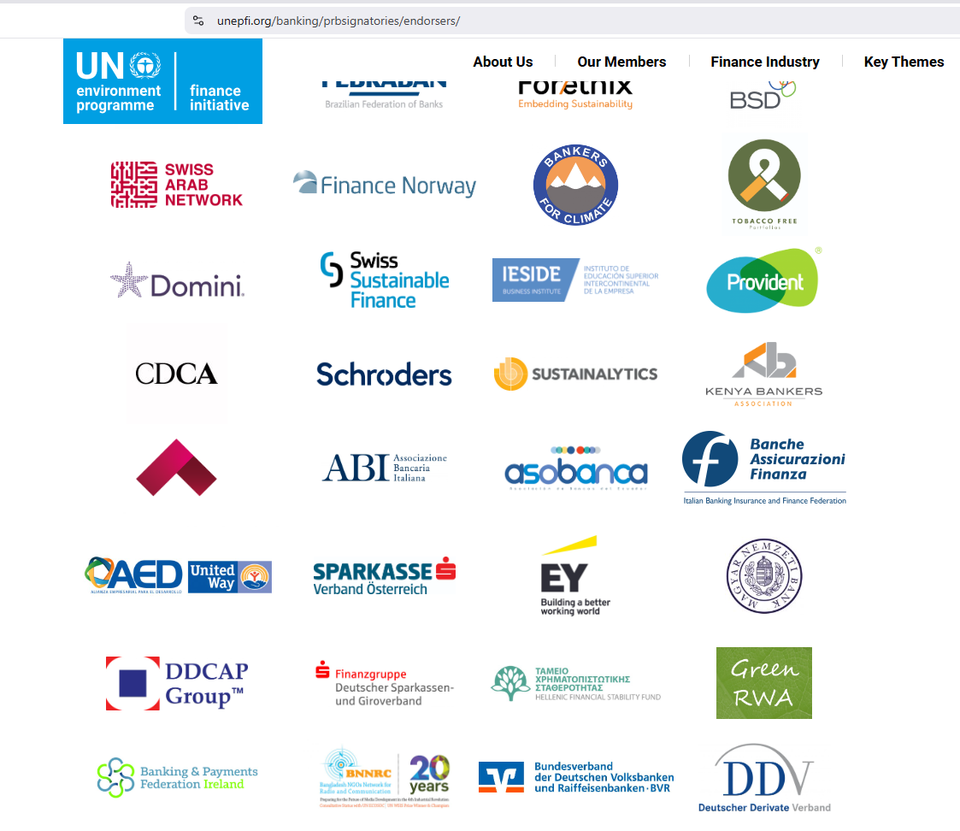
Banks Worth $89 Trillion Adopt New United Nations backed Sustainability Principles
________________
More than just a political statement, the Agenda is a financial and regulatory blueprint. It has prompted a sweeping shift across international markets, influencing how countries, banks, and investors allocate capital. It has become a structural mandate for institutions to measure success not just in profits, but in environmental impact, social equity, and governance accountability. For global finance leaders, this means adjusting lending practices, investment criteria, and compliance standards to meet ESG and SDG-linked outcomes—many of which are embedded in Basel, IFRS, and sustainability-linked instruments.
More than just a political statement, the Agenda is a financial and regulatory blueprint. It has prompted a sweeping shift across international markets, influencing how countries, banks, and investors allocate capital. It has become a structural mandate for institutions to measure success not just in profits, but in environmental impact, social equity, and governance accountability. For global finance leaders, this means adjusting lending practices, investment criteria, and compliance standards to meet ESG and SDG-linked outcomes—many of which are embedded in Basel, IFRS, and sustainability-linked instruments.
By 2024, over 500 international and regional banks—including virtually every Tier-1 institution—have aligned with the Agenda’s principles, either directly or through affiliated initiatives such as the UN Principles for Responsible Banking, whose 300+ signatory banks span 70 countries and oversee more than $89 trillion in assets. This convergence has fundamentally redefined how capital is deployed, how risk is calculated, and how compliance is benchmarked—positioning the SDGs not as idealistic aspirations, but as central operating metrics for the future of finance.
Private Finance For The SDGs
 PDF
PDF
Reimagining Finance to Accelerate Global Progress
Despite widespread commitment, the world is falling behind on the Sustainable Development Goals (SDGs). Only about 15% of targets are on track, while over a third have slipped below their 2015 baselines. The clock is ticking—and the gap between ambition and action has grown into a $4.2 trillion annual shortfall.
This isn’t just a funding issue. It’s a systems challenge.
GFMT Global's Private Finance for the SDGs initiative is flipping the script—positioning private capital not as a side player, but as a primary force in global development. By realigning financial markets to reward sustainability, and helping institutions create the policies and frameworks needed to guide responsible investment, GFMT Global is building a new model of finance—one where profit, people, and planet rise together.
The goal isn’t just more money. It’s smarter money—mobilized intentionally to create long-term, inclusive prosperity for all.
Despite widespread commitment, the world is falling behind on the Sustainable Development Goals (SDGs). Only about 15% of targets are on track, while over a third have slipped below their 2015 baselines. The clock is ticking—and the gap between ambition and action has grown into a $4.2 trillion annual shortfall.
This isn’t just a funding issue. It’s a systems challenge.
GFMT Global's Private Finance for the SDGs initiative is flipping the script—positioning private capital not as a side player, but as a primary force in global development. By realigning financial markets to reward sustainability, and helping institutions create the policies and frameworks needed to guide responsible investment, GFMT Global is building a new model of finance—one where profit, people, and planet rise together.
The goal isn’t just more money. It’s smarter money—mobilized intentionally to create long-term, inclusive prosperity for all.

The 1944 Origins of Economic Development & Recovery Capital
________________
The foundations of this funding model were introduced by John Maynard Keynes at the Bretton Woods Conference of 1944, where structured financial mechanisms were first used to stabilize global economies and fund large-scale development projects. This framework led to the formation of the World Bank, the IMF, and the Private Placement Market (PPM)—a financial ecosystem designed to inject liquidity into global infrastructure, humanitarian initiatives, and economic development.
The foundations of this funding model were introduced by John Maynard Keynes at the Bretton Woods Conference of 1944, where structured financial mechanisms were first used to stabilize global economies and fund large-scale development projects. This framework led to the formation of the World Bank, the IMF, and the Private Placement Market (PPM)—a financial ecosystem designed to inject liquidity into global infrastructure, humanitarian initiatives, and economic development.
Traditionally, entry into these programs required minimum capital placements exceeding $100 million, restricting access to elite financial institutions and sovereign players. Today, through GFMT’s intake consulting services, pre-qualified clients may access structured arbitrage humanitarian funding with significantly reduced capital thresholds starting at $1 million, provided they meet the stringent requirements necessary for monetary desk approval.
The Marshall Plan & UN | The 1948-1951 Partnership
The Marshall Plan (1948-1952) was a U.S.-led economic recovery program designed to rebuild war-torn Europe after World War II. Officially known as the European Recovery Program (ERP), it injected over $13 billion ($160+ billion today, inflation-adjusted) into Western Europe to stabilize economies, restore industrial capacity, and prevent communist influence.
By providing capital, technical assistance, and financial aid, the plan revitalized trade commerce, modernized industries, and accelerated GDP growth, laying the foundation for Europe’s post-war economic dominance and shaping the modern global financial system.
By providing capital, technical assistance, and financial aid, the plan revitalized trade commerce, modernized industries, and accelerated GDP growth, laying the foundation for Europe’s post-war economic dominance and shaping the modern global financial system.

Timeline: From The Mutual Security Act of 1951 To The United Nations Sustainable Framework of 2015
________________
Between the Mutual Security Act of 1961 and the UN SDGs of 2015, several interlocking international frameworks governed how banks, sovereign states, and private partners could cooperate under evolving economic and security mandates. These frameworks were not as unified as the SDGs but laid the critical groundwork. Here's what existed during that transitional period:
🔹 1. OECD and DAC Frameworks (1961 onward)
The Organization for Economic Co-operation and Development (OECD) and its Development Assistance Committee (DAC) provided post-war guidance for aid flows, public-private partnerships, and development finance aligned with U.S. and Western security goals.
Banks and financial institutions could channel development capital through DAC-aligned programs, sometimes leveraging matching funds or concessional financing.
🔹 2. Basel Committee on Banking Supervision (Established 1974)
The Basel Accords (Basel I in 1988, Basel II in 2004, Basel III in 2010–2011) created standardized capital adequacy, risk management, and liquidity regulations for international banks.
Under Basel, banks were encouraged to diversify and syndicate risk—opening doors for structured partnerships with private and quasi-sovereign entities to support stable development-focused lending.
🔹 3. ICC and Lex Mercatoria Instruments
The International Chamber of Commerce (ICC) supported cross-border trade and finance through frameworks like:
UCP 500/UCP 600 – Uniform Customs and Practice for Documentary Credits.
URDG – Uniform Rules for Demand Guarantees.
These instruments created enforceable rulesets for guarantees, standby letters of credit, and structured notes, which banks could use in development-focused trade and infrastructure financing.
🔹 4. IMF-World Bank Structural Adjustment and Project Finance (1980s–2000s)
During debt crises, institutions like the World Bank, IFC, and IMF encouraged project co-financing with banks and private capital under structural adjustment lending.
Banks and hedge funds often partnered to deliver public infrastructure projects, privatizations, and sovereign credit facilities under monitored conditions.
🔹 5. UN Millennium Development Goals (2000–2015)
Though not as bank-integrated as the SDGs, the MDGs began aligning development targets with financial instruments—paving the way for green bonds, ESG frameworks, and SDG-linked loan instruments that came later.
Summary:
Following the conclusion of the Mutual Security Act in 1961, the most relevant cooperative tools for banks included OECD-DAC development rules, Basel capital coordination, ICC trade instruments, and IMF/World Bank conditional lending programs. These provided the legal and financial architecture to form public-private partnerships and risk-sharing structures—especially for development, humanitarian recovery, and cross-border infrastructure—foreshadowing the 2030 UN SDG-aligned finance we see today.
The Mutual Security Act of 1951-1961 | The Successor
 PDF
PDF
The Mutual Security Act of 1951 launched a major American foreign aid program, 1951–61, of grants to numerous countries. It largely replaced the Marshall Plan. The main goal was to help underdeveloped US-allied countries develop and to contain the spread of communism.

International Banking: If You Think Economic Capital Is New, You’ve Been Asleep for 70 Years
________________
Back in the early 1950s, global banks supported the Mutual Security Act—but in a very different way than they support today’s UN Sustainable Development Goals (SDGs). That support wasn’t based on metrics or SDG frameworks. Instead, it was geopolitical. Banks in U.S.-aligned nations backed the MSA through policy coordination and financial pathways shaped by Cold War strategy, reconstruction priorities, and counter-Soviet influence.
Today, that support structure looks more formal, global, and investor-facing. International banks now align with the SDGs through risk-weighted metrics, regulatory incentives, and ESG-based frameworks that directly influence capital deployment. It’s no longer just about foreign policy—it’s about compliance, brand integrity, and market positioning in a world where sustainability and transparency drive long-term financial performance.
Key International Banks Involved (Directly or Indirectly) in MSA Support:
1. Chase Manhattan Bank (later JPMorgan Chase) – U.S.
Actively engaged in financing overseas projects aligned with U.S. foreign policy.
2. Citibank (then First National City Bank) – U.S.
Major financier of post-war development projects in Latin America and Asia.
3. Lazard Frères – France/U.S.
A key actor in restructuring European debt and facilitating financial diplomacy.
4. Deutsche Bank – West Germany
Operated under U.S. occupation and Marshall Plan restructuring.
5. Bank of England – U.K.
Worked closely with the U.S. Federal Reserve in currency stabilization efforts, including MSA-related mechanisms.
6. Crédit Lyonnais / BNP Paribas – France
7. Swiss Banks (e.g., UBS, Credit Suisse)
8. Banco di Roma / Banca Commerciale Italiana – Italy
9. Bank for International Settlements (BIS) – Switzerland
10. International Bank for Reconstruction and Development (IBRD – World Bank)
How They Supported MSA Objectives:
Important Note:
Unlike modern UN-SDG (Sustainable Development Goals)-aligned lending, where banks publish impact metrics and ESG disclosures, MSA-era bank involvement was driven by:
Support was often quiet, government-facilitated, and deeply entangled in U.S. geopolitical and financial dominance structures.
Back in the early 1950s, global banks supported the Mutual Security Act—but in a very different way than they support today’s UN Sustainable Development Goals (SDGs). That support wasn’t based on metrics or SDG frameworks. Instead, it was geopolitical. Banks in U.S.-aligned nations backed the MSA through policy coordination and financial pathways shaped by Cold War strategy, reconstruction priorities, and counter-Soviet influence.
Today, that support structure looks more formal, global, and investor-facing. International banks now align with the SDGs through risk-weighted metrics, regulatory incentives, and ESG-based frameworks that directly influence capital deployment. It’s no longer just about foreign policy—it’s about compliance, brand integrity, and market positioning in a world where sustainability and transparency drive long-term financial performance.
Key International Banks Involved (Directly or Indirectly) in MSA Support:
1. Chase Manhattan Bank (later JPMorgan Chase) – U.S.
Actively engaged in financing overseas projects aligned with U.S. foreign policy.
- Provided dollar-denominated commercial credit to European nations receiving MSA and Marshall Plan aid.
- Worked closely with U.S. Treasury and Federal Reserve in managing Eurodollar flows.
2. Citibank (then First National City Bank) – U.S.
Major financier of post-war development projects in Latin America and Asia.
- Often extended credit guarantees tied to U.S. foreign aid programs under MSA.
3. Lazard Frères – France/U.S.
A key actor in restructuring European debt and facilitating financial diplomacy.
- Helped channel private capital into MSA-backed markets.
4. Deutsche Bank – West Germany
Operated under U.S. occupation and Marshall Plan restructuring.
- Played a pivotal role in Germany’s post-war industrial and infrastructure redevelopment, indirectly backed by MSA flows.
5. Bank of England – U.K.
Worked closely with the U.S. Federal Reserve in currency stabilization efforts, including MSA-related mechanisms.
- Maintained special relationships to manage sterling-dollar liquidity corridors.
6. Crédit Lyonnais / BNP Paribas – France
- Extended commercial credit to French exporters benefiting from U.S. aid-funded imports and development contracts.
7. Swiss Banks (e.g., UBS, Credit Suisse)
- Acted as neutral intermediaries and custodial institutions for MSA-linked capital flows and currency stabilization activities.
8. Banco di Roma / Banca Commerciale Italiana – Italy
- Helped implement infrastructure and industrial development loans linked to U.S. MSA disbursements in Southern Europe.
9. Bank for International Settlements (BIS) – Switzerland
- Played a technical coordination role in currency clearance and payment settlements for MSA-related foreign exchange operations.
10. International Bank for Reconstruction and Development (IBRD – World Bank)
- Though not a commercial bank, IBRD co-financed many MSA-aligned projects, particularly in infrastructure, electrification, and agriculture.
How They Supported MSA Objectives:
- Issuing loans to sovereign borrowers with U.S. Treasury or Export-Import Bank guarantees.
- Financing American contractors and exporters fulfilling MSA-backed infrastructure contracts abroad.
- Engaging in co-lending syndicates tied to reconstruction and defense-industrial expansions.
- Stabilizing foreign currencies through central bank relationships in support of MSA-driven economic realignment.
Important Note:
Unlike modern UN-SDG (Sustainable Development Goals)-aligned lending, where banks publish impact metrics and ESG disclosures, MSA-era bank involvement was driven by:
- Cold War strategy
- Dollar diplomacy
- Access to subsidized and protected markets
Support was often quiet, government-facilitated, and deeply entangled in U.S. geopolitical and financial dominance structures.
Private Funding for Sustainable Impact Projects | 2015-2030
It has been here. It is REAL. It is available. Applications by invitation only.
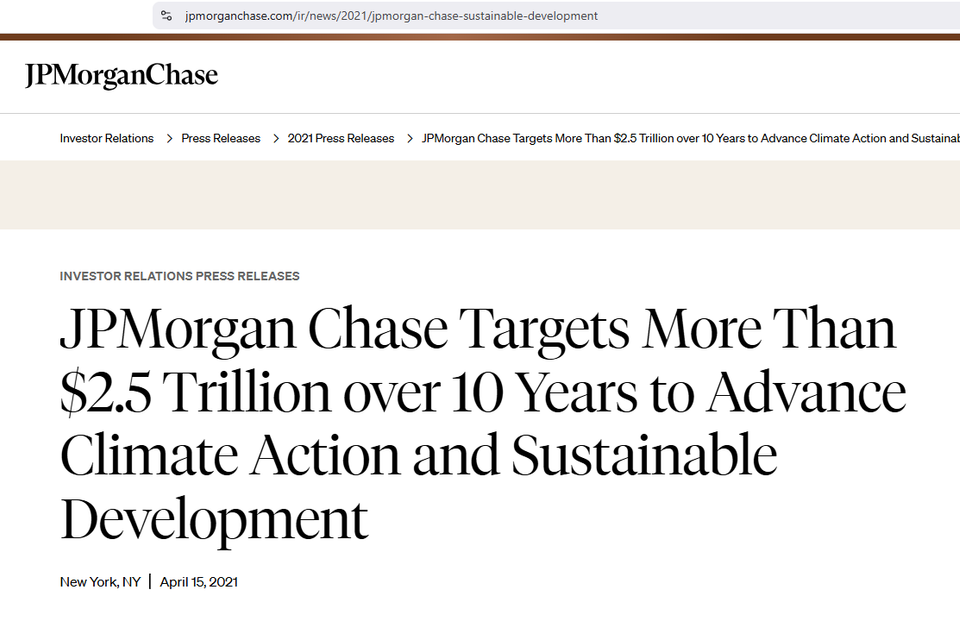
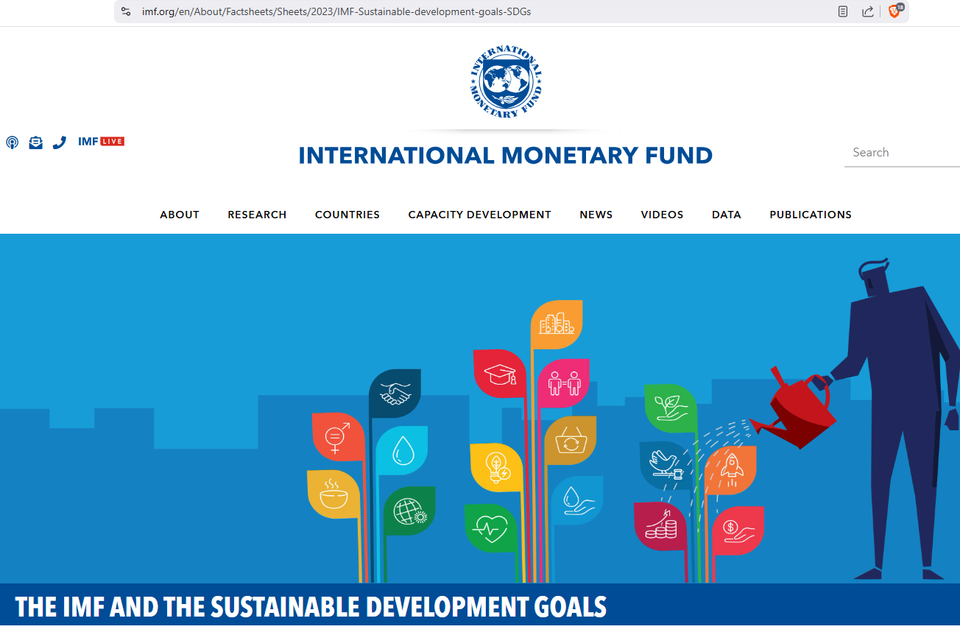
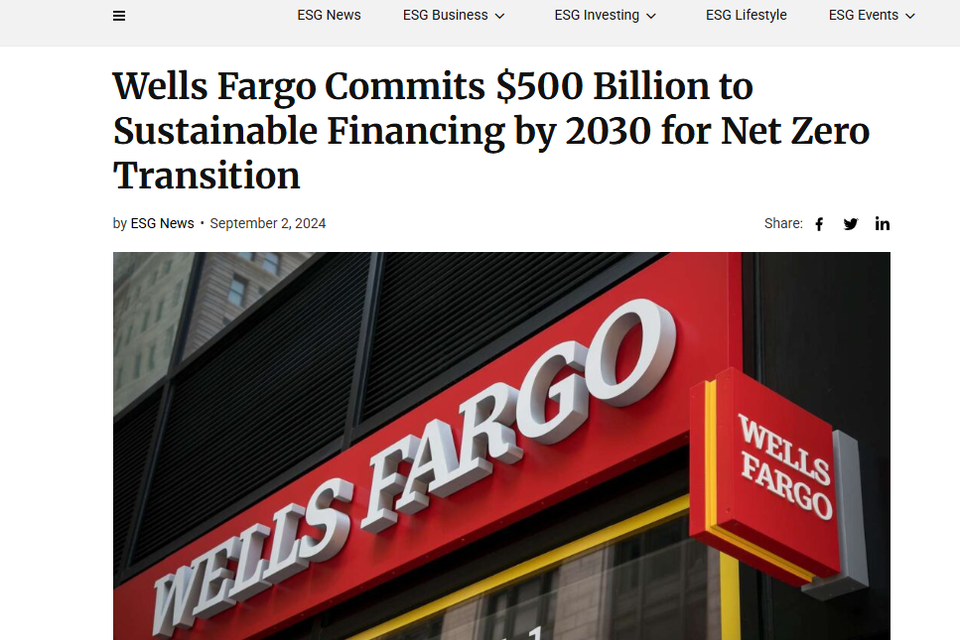

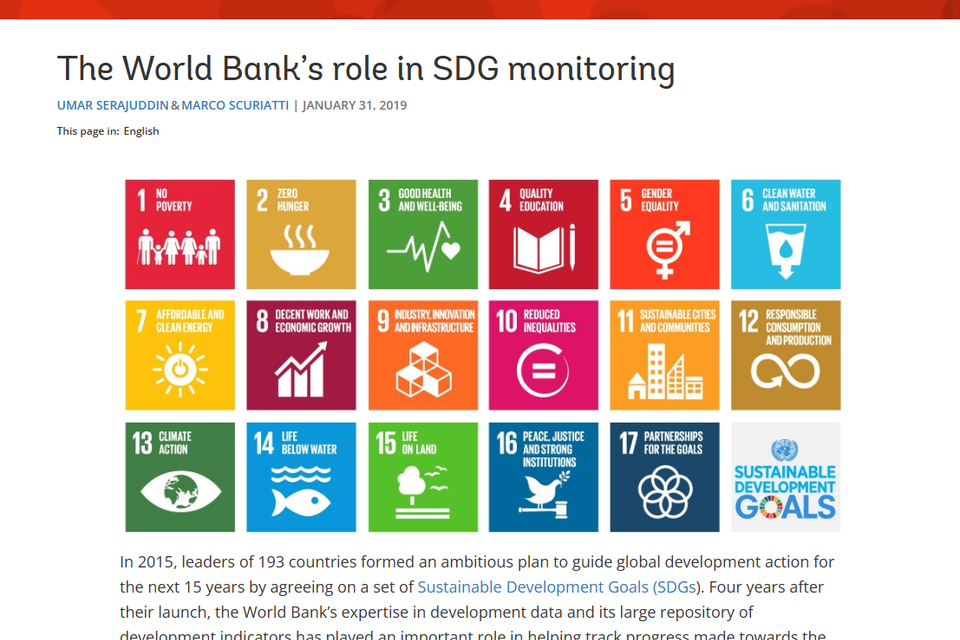
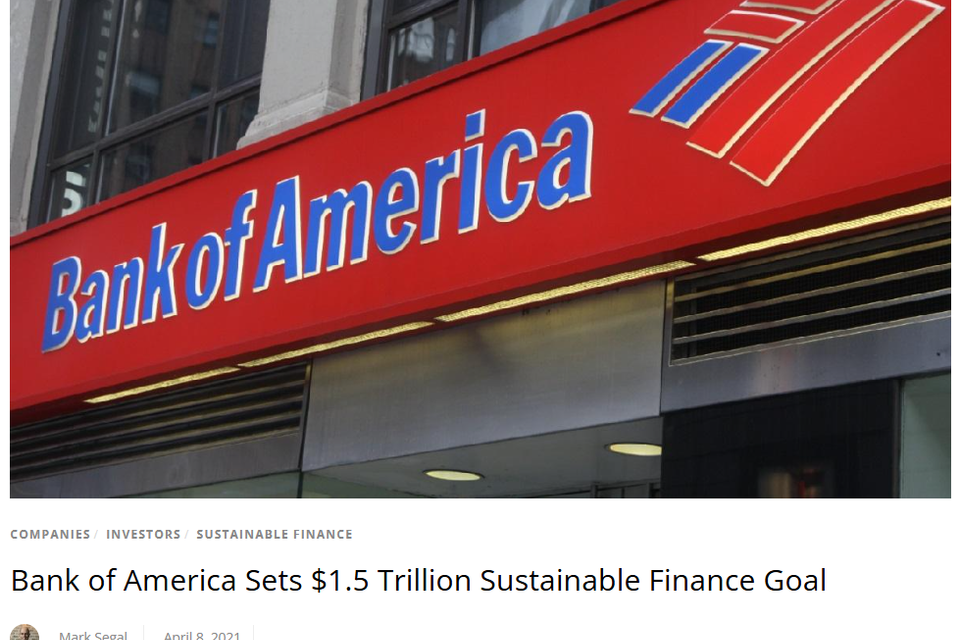



PECI vs Traditional Funding
________________
A Smarter Way to Capitalize Projects
In conventional finance, principals are typically expected to contribute 20%–30% of total project costs—often backed by personal guarantees, interest-bearing debt, and equity dilution. These burdens restrict scale and place undue risk on visionary operators.
GFMT Global | Project Finance deploys the Sustainable Development Goals (SDG's) Funding framework Through our Provisional Economic Capital Initiative (PECI). All PECI capital has its origination in the ethos of a Tier-1 bank–regulated environment. This structured origination may be completed as an off-book banking or, a confidential and private invitation transaction that ensures adherence to the required compliance, transparency, and institutional-grade oversight.
Next, the capital is non-debt, non-recourse, and no personal guarantee funding deployed through a hybrid-grant framework using structured matching ratios. For every $1 allocated by the principal as a liquid equity stake, the funding desk can match with $1 to $50 in non-debt capital—depending on availability, structure, and project profile.
Unlike traditional systems that limit scalability, our framework supports multiple simultaneous funding contracts, allowing principals to fund several ventures concurrently—including those with narrow margins—while maintaining full control and ownership.
This also results in up to 150% LTV funding per project, without interest, dilution, or repayment obligations—a high-leverage, low-risk pathway for qualified private partners to unlock capital at scale.
There are NO UPFRONT COST. Capital is delivered in tranche phases. There's No debt. No dilution. No loss of control.
Just smarter capital for projects that matter.
A Smarter Way to Capitalize Projects
In conventional finance, principals are typically expected to contribute 20%–30% of total project costs—often backed by personal guarantees, interest-bearing debt, and equity dilution. These burdens restrict scale and place undue risk on visionary operators.
GFMT Global | Project Finance deploys the Sustainable Development Goals (SDG's) Funding framework Through our Provisional Economic Capital Initiative (PECI). All PECI capital has its origination in the ethos of a Tier-1 bank–regulated environment. This structured origination may be completed as an off-book banking or, a confidential and private invitation transaction that ensures adherence to the required compliance, transparency, and institutional-grade oversight.
Next, the capital is non-debt, non-recourse, and no personal guarantee funding deployed through a hybrid-grant framework using structured matching ratios. For every $1 allocated by the principal as a liquid equity stake, the funding desk can match with $1 to $50 in non-debt capital—depending on availability, structure, and project profile.
Unlike traditional systems that limit scalability, our framework supports multiple simultaneous funding contracts, allowing principals to fund several ventures concurrently—including those with narrow margins—while maintaining full control and ownership.
This also results in up to 150% LTV funding per project, without interest, dilution, or repayment obligations—a high-leverage, low-risk pathway for qualified private partners to unlock capital at scale.
There are NO UPFRONT COST. Capital is delivered in tranche phases. There's No debt. No dilution. No loss of control.
Just smarter capital for projects that matter.
The WBG: Closing the SDGs Financing Gap
 PDF
PDF
Every year, the World Bank Group reflects on its support across more than 170 countries, gauging how close we’re getting to the 17 Sustainable Development Goals (SDGs) adopted globally in 2015. These goals aren’t just a wish list—they require real money, real data, and real implementation, all the way from national policies to the street level.
In its latest review, the Bank underscores both the progress and the pressure. Challenges like armed conflict, climate shocks, inequality, and tech disruption still create massive headwinds. But the momentum is real—especially where targeted investment meets local accountability. Areas like clean water, healthcare, education, job training, infrastructure, and climate resilience are seeing tangible gains where the Bank is hands-on.
Ultimately, the message is clear: bridging the SDG financing gap isn’t just about writing checks. It’s about redesigning financial flows, measuring what works, and showing that global goals can be locally delivered—especially for the poor and vulnerable.
In its latest review, the Bank underscores both the progress and the pressure. Challenges like armed conflict, climate shocks, inequality, and tech disruption still create massive headwinds. But the momentum is real—especially where targeted investment meets local accountability. Areas like clean water, healthcare, education, job training, infrastructure, and climate resilience are seeing tangible gains where the Bank is hands-on.
Ultimately, the message is clear: bridging the SDG financing gap isn’t just about writing checks. It’s about redesigning financial flows, measuring what works, and showing that global goals can be locally delivered—especially for the poor and vulnerable.

Structured PECI Escalation Model
From $25M to $800M+ in Strategic Development Capital
From $25M to $800M+ in Strategic Development Capital
________________
I. Strategic Framework
I. Strategic Framework
This capital optimization strategy provides project sponsors the ability to access multi-phase capital awards through structured legal contracts that integrate UN Sustainable Development Goals (SDG) funding mechanisms, specifically through the Private Economic Capital Initiative (PECI). The capital can be utilized to diversify the capital stack, or if possible, cover the entire project cost.
Rather than deploying a conventional 80/20 debt-to-equity model—which would typically require $80 million in equity for a $400 million development—sponsors may participate with a $25 million liquidity stake under a contract-based model that provides matched non-recourse capital without interest, repayment, or equity relinquishment.
Capital access is confirmed and disbursed via bank-to-bank administrative hold and escrow instruction, and not through speculative trading, margin leveraging, or pooled investor aggregation. The originating capital remains under client ownership at all times. Awarded capital is contractually issued through a Tier-1 banking environment and compliance framework and distributed under regulated escrow procedures with attorney oversight.
Each circumstance is inherently context-dependent, influenced by capital tier, banking conditions, and deployment structure. While the illustrated model is fully scalable to substantially larger sponsor’s liquidity stake; it is essential to note that the provisional fixed matching liquidity ratio may correspondingly adjust—reflecting the dynamic calibration of risk protocols, counter-party capacity, and regulatory architecture at scale. II. Defined Capital Match Ratio
PECI Match Ratio: 5:1
For every $1.00 USD of verifiable and qualified capital committed by the sponsor, the PECI mechanism delivers $5.00 USD in structured, disbursed project funding. III. Escalation Model: Contract Cycle Breakdown
Cycle 1 – Activation Phase Cycle 2 – Expansion Phase Cycle 3 – Program Completion Phase IV. Total Cumulative Capital Summary
V. Program Notes & Legal Integrity
VI. Regulatory and Legal Disclaimer
Important Notice:
This document is intended for professional and institutional review only. It does not constitute an offer to sell or a solicitation of an offer to buy any security, investment product, or financial instrument, and may not be relied upon in connection with the purchase or sale of any such assets. This structure is not a security, investment product, private placement, pooled investment, or loan. It is a contractual capital deployment model issued under private agreement for qualified counterparties only.
All figures herein are illustrative and subject to change based on legal structuring, market conditions, regulatory review, and formal third-party compliance validation. Sponsors must seek their own independent legal, financial, and tax counsel prior to participation.
The PECI structure is governed by applicable U.S. law, banking compliance standards, and anti-money laundering statutes. Sponsors must certify lawful capital origin, attest to no prior felony convictions among controlling parties, and remain in full compliance with all applicable U.S. Treasury and OFAC regulations.
Unauthorized use, reproduction, or misrepresentation of this model may result in civil or criminal penalties. This document may not be distributed to retail investors or the general public.
Rather than deploying a conventional 80/20 debt-to-equity model—which would typically require $80 million in equity for a $400 million development—sponsors may participate with a $25 million liquidity stake under a contract-based model that provides matched non-recourse capital without interest, repayment, or equity relinquishment.
Capital access is confirmed and disbursed via bank-to-bank administrative hold and escrow instruction, and not through speculative trading, margin leveraging, or pooled investor aggregation. The originating capital remains under client ownership at all times. Awarded capital is contractually issued through a Tier-1 banking environment and compliance framework and distributed under regulated escrow procedures with attorney oversight.
Each circumstance is inherently context-dependent, influenced by capital tier, banking conditions, and deployment structure. While the illustrated model is fully scalable to substantially larger sponsor’s liquidity stake; it is essential to note that the provisional fixed matching liquidity ratio may correspondingly adjust—reflecting the dynamic calibration of risk protocols, counter-party capacity, and regulatory architecture at scale.
PECI Match Ratio: 5:1
For every $1.00 USD of verifiable and qualified capital committed by the sponsor, the PECI mechanism delivers $5.00 USD in structured, disbursed project funding.
-
This match ratio is contractually fixed and executed only upon:
- Verified submission of compliance documentation
- Execution of designated agreements
- Confirmation of funds via bank-to-bank administrative hold protocols
- No capital is moved or hypothecated.
- Disbursements are controlled through licensed fiduciary intermediaries in compliance with U.S. and international law.
Cycle 1 – Activation Phase
- Client Stake Allocation: $25,000,000
- PECI Match at 5:1: $125,000,000
- Net Capital Accessed (post-structuring): ~$87,500,000
- Sponsor Retained for Immediate Use: $37,500,000
(Entitlements, legal structuring, early procurement, feasibility) - Capital Carried Into Next Contract Cycle: $50,000,000
- Sponsor Capital Carried Forward: $50,000,000
- PECI Match at 5:1: $250,000,000
- Net Capital Accessed (after processing): ~$175,000,000
- Sponsor Retained for Phase II Use: $75,000,000
(Design finalization, contracting, land dev, vertical mobilization) - Capital Carried Into Next Contract Cycle: $100,000,000
- Sponsor Capital Carried Forward: $100,000,000
- PECI Match at 5:1: $500,000,000
- Net Capital Accessed (post-administration): ~$350,000,000
- Retained by Sponsor: $250,000,000
(Infrastructure, advanced systems, value engineering, scale deployment) - Strategic Reserve: $100,000,000
(Post-construction stabilization, entry into next PECI contract, liquidity buffers, regional expansion, or debt displacement)
- Original Stake: $25,000,000
- Total Gross Match Awards: $875,000,000
- Total Net Capital Accessed for Project Use: ~$612,500,000
- Total Sponsor Retained for Deployment: $262,500,000
- Equity Dilution: None
- Repayment Obligation: None
- Capital Movement from Sponsor’s Account: None
- Contract-based disbursements only occur after approval by legal, compliance, and fiduciary entities.
- All capital flows are governed by administrative protocols, legal banking agreements, and financial regulatory oversight.
- Program does not involve asset pooling, derivative exposure, or retail investor participation.
- Sponsor must pass due diligence including KYC/CIS, proof of funds, AML review, and documentation of lawful capital source.
- Funds must be free from lien, encumbrance, or third-party control and reside in the name of the operating sponsor.
Important Notice:
This document is intended for professional and institutional review only. It does not constitute an offer to sell or a solicitation of an offer to buy any security, investment product, or financial instrument, and may not be relied upon in connection with the purchase or sale of any such assets. This structure is not a security, investment product, private placement, pooled investment, or loan. It is a contractual capital deployment model issued under private agreement for qualified counterparties only.
All figures herein are illustrative and subject to change based on legal structuring, market conditions, regulatory review, and formal third-party compliance validation. Sponsors must seek their own independent legal, financial, and tax counsel prior to participation.
The PECI structure is governed by applicable U.S. law, banking compliance standards, and anti-money laundering statutes. Sponsors must certify lawful capital origin, attest to no prior felony convictions among controlling parties, and remain in full compliance with all applicable U.S. Treasury and OFAC regulations.
Unauthorized use, reproduction, or misrepresentation of this model may result in civil or criminal penalties. This document may not be distributed to retail investors or the general public.

PECI: Unleash Scale Without Sacrificing Equity Ownership
________________
"Capital doesn’t chase comfort—it follows structure, vision, and trust. In a world drowning in debt, we offer a framework where capital flows without burden and growth begins without compromise."
"Capital doesn’t chase comfort—it follows structure, vision, and trust. In a world drowning in debt, we offer a framework where capital flows without burden and growth begins without compromise."

Structured Capital Ecosystem
________________
GFMT Global works directly with each principal to align the timing and amounts of aggregated capital to match their exact project budget schedule—eliminating cash flow uncertainty and enabling more confident planning.
Matching ratios range from 1:1 to 1:50, determined by banking conditions, program structure, and available allocation windows.
Capital Timing Matches Project Phases
Principals may retain a portion of the net proceeds from each contract cycle to fund project stages—engineering, permitting, procurement, and construction—while multiplying contract value through successive cycles to build toward the total capital needed.GFMT Global works directly with each principal to align the timing and amounts of aggregated capital to match their exact project budget schedule—eliminating cash flow uncertainty and enabling more confident planning.
Larger Initial Liquidity Stake = Fewer Contract Cycles
While some projects begin with a $1M liquidity stake (when available) and multiply contract value over 3–5 structured cycles, larger capital stake allocations ($10M–$15M+, or $100M+) typically require fewer cycles and may reach full funding much faster—often within one or two contracts, depending on the matching ratio and project scope.Matching ratios range from 1:1 to 1:50, determined by banking conditions, program structure, and available allocation windows.
Compliance + Long-Term Access Participation requires rigorous anti-money laundering (AML) clearance and a clean felony background, ensuring regulatory integrity and global compliance. Once approved, principals gain access to a long-term funding relationship that can support multiple project engagements over time, with repeat capital access and increasing scale.
International Capital Deployment
Approved participants can deploy funds globally—across sectors, continents, and currencies—opening the door to international infrastructure, development, and humanitarian initiatives with no exposure to market volatility.Common Liquidity Stake Tiers
Based on more than 75 years of program deployment history, most successful entries follow one of these typical capital tiers (which are subject to change without notice until a clients funding contract is fully executed):- Tier I: $1M+ — ideal for multiplying contracts progressively
- Tier II: $10M–$15M — for rapid aggregation across mid-sized programs
- Tier III: $100M+ — institutional-scale capital placements with high-capacity returns
Summary: Why Principals Choose This Model
- Full project funding with minimal capital outlay
- No loans, no interest, no equity dilution
- Principal funds remain secure and under control
- Structured matching that aligns with real project phases
- Fewer contract cycles with larger liquidity stakes
- Global deployment of proceeds
- Long-term relationship after compliance clearance
Why It’s Different
- Not an investment—profits, not loans or equity
- No repayment. All proceeds belong to the participant
- Can be reused for continuous funding
Confidentiality & Privileged Access
Details regarding specific institutions and financial facilitators will be provided only after a client has been vetted and determined to be a qualified fit for structured capital placement. This protects market integrity, ensuring that confidentiality, compliance, and that financial oversight is properly assigned from the proper facility throughout the process.
Strategic Capital Access
________________
Our expertise lies in navigating the complexities of private invitation placement programs, structured capital markets, and humanitarian funding initiatives. By coordinating with intake desk managers and facilitating licensed professionals, we provide structured access to regulated institutional mechanisms, ensuring that pre-vetted principals and their projects meet compliance and financial viability standards before submission.

Next Steps for Participation
________________
Participation requires an invitation for Humanitarian Project Funding with full regulatory compliance and due diligence to meet global oversight standards.
To initiate the intake process
Participation in this market requires rigorous due diligence to ensure compliance with global financial regulations and oversight bodies.
To initiate the process, prospective clients must:
This due diligence process is designed to protect market integrity and eliminate unqualified participants, ensuring structured funding is deployed exclusively for viable, high-impact projects.
Participation requires an invitation for Humanitarian Project Funding with full regulatory compliance and due diligence to meet global oversight standards.
To initiate the intake process
Participation in this market requires rigorous due diligence to ensure compliance with global financial regulations and oversight bodies.
To initiate the process, prospective clients must:
- Download and complete the Preliminary Enquiry Form (PEF) to initiate compliance review.
- Undergo banking and residency validation to satisfy financial oversight requirements.
- Provide proof of funds (for cash tranactions only) to establish financial standing and priority review.
- Undergo banks provisional desk evaluation and approval for contracted entry.
This due diligence process is designed to protect market integrity and eliminate unqualified participants, ensuring structured funding is deployed exclusively for viable, high-impact projects.
Private Client Access & Due Diligence

________________
Given the high-value nature and regulatory constraints of Arbitrage Humanitarian Funding, access is tightly controlled. No firm can guarantee acceptance into any program. GFMT’s role is to conduct intake consulting, pre-vetting, and structured submission of qualified project applications to maximize the probability of approval.
To be considered, a project must meet stringent pre-qualification criteria, including:
Given the high-value nature and regulatory constraints of Arbitrage Humanitarian Funding, access is tightly controlled. No firm can guarantee acceptance into any program. GFMT’s role is to conduct intake consulting, pre-vetting, and structured submission of qualified project applications to maximize the probability of approval.
To be considered, a project must meet stringent pre-qualification criteria, including:
- A detailed proforma and financial model that demonstrates project viability.
- Comprehensive documentation outlining project impact and funding structure.
- Proof of funds (where applicable) for cash-based placements.
- Full AML compliance and banking validation in accordance with international regulations.
All submissions undergo a rigorous pre-vetting process before being formally presented to a provisional capitalization desk. Final acceptance is determined by the platform’s financial compliance teams.

Correspondent and Strategic Advisor
________________
GFMT does not manage institutional monetary desks. Instead, we function as a gatekeeper and strategic advisor, ensuring that capital submissions are structured to meet the risk assessment, liquidity, and compliance standards of institutional monetary platforms.
- Pre-Qualification & Compliance Review – Vetting stakeholders and project sponsors against global financial oversight requirements.
- Capital Structuring & Submission Optimization – Aligning liquidity placements with institutional monetary exchange criteria.
- Institutional Market Access – Coordinating with Tier-1 intake desks to facilitate entry into regulated capital placement programs.
- Due Diligence & Risk Mitigation – Ensuring structured capital flows comply with AML, KYC, and regulatory governance frameworks.

By Private Client Invitation Only Disclaimer
________________
- Access to structured PECI capital is strictly controlled. GFMT ensures that only pre-qualified participants are submitted for review, preserving the integrity of closed-contract capital placements and mitigating compliance risks.
- No Guaranteed Placement – Acceptance remains at the sole discretion of institutional provisional monetary desks, based on risk, liquidity, and regulatory compliance.
- Strict Vetting Process – Stakeholders must satisfy institutional risk frameworks, financial governance policies, and due diligence requirements before submission.
- Confidentiality & Disclosure – Institutional details are shared only after full vetting, ensuring regulatory alignment and protecting capital flows.
- FBI Background Verification – To strengthen compliance, we assist in obtaining FBI background verification as part of the submission process.

It's Time. Get Smart About Your Humanitarian Capital Strategy
Contact us today to schedule a free private client consultation.
